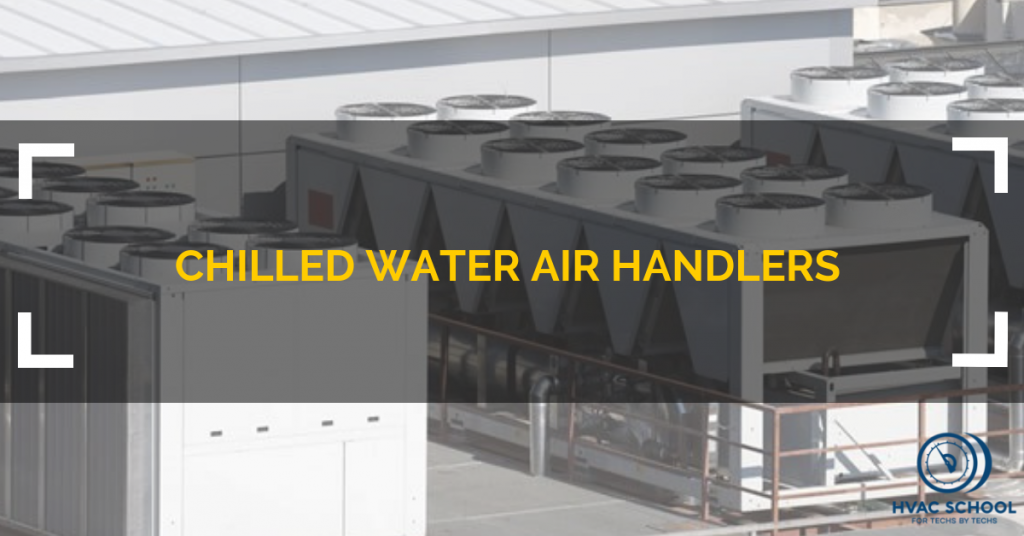Chilled Water Air Handlers (Podcast)

In today's podcast, Eric Mele and Bryan talk about chilled water air handlers, their valve configurations, and some key things to look out for.
In a chilled water system, we don't have the traditional evaporator and condenser in our HVAC system. Instead, we merely have a hot coil and a cold coil. We don't work with a direct-expansion refrigerant that changes state. We merely move water. These chilled water systems can be used in residential and commercial applications.
With almost all applications, both pipes will be insulated in the same size. You may also see an actuator on the outside, which impacts water flow and attaches on top of the valve. Chilled water systems can come in a two-pipe configuration or a four-pipe configuration. The supply water on chillers typically runs about 44 degrees (F).
The water loops on chilled water air handlers may have either a two-way valve or a three-way valve. You'll generally see a two-way valve on systems with variable frequency drives (variable water flow). Conversely, three-way valves will typically be on systems with more constant water flow; the pump runs at a constant volume, so the three-way valve acts as a bypass. If you must replace a valve, make sure you use the correct valve for the application.
These chilled water air handlers don't easily allow you to get readings from them. Once you factor insulation in, you may not have access to pressure ports at all. Some larger air handlers may have gauges installed, but they may not be accurate.
Eric and Bryan also discuss:
- Insulation
- Diverting vs. mixing on three-way valves
- VAV system similarities
- Line voltage controls and fan speed
- Challenges and building maintenance staff
- Air bleeds
- Actuators
Learn more about Refrigeration Technologies HERE.









Comments
To leave a comment, you need to log in.
Log In